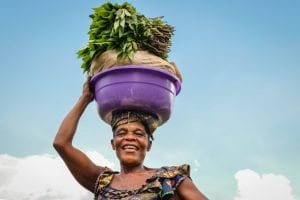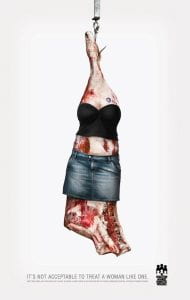Understanding Intersectionality is one of the keys to conceptualizing ecofeminism and the ecofeminist interconnected “web” perspective. Intersectionality is how everyone connects with the world around them, understanding the different facets of an individual identity. By defining the individual aspect of your identity you can sort out and better understand where the intersections are in an individual identity. Intersectionality is best described like a web, A.E king describes how “each spoke of the web representing a continuum of different types of social categorization such as gender, sexuality, race, or class; while encircling spirals depict individual identities” (King 65). For example, I am a non-binary, Jewish, white, student. Non-binary is my gender, Jewish my religion, white my race, and student as my class indicator. All of these individual facts are true and help to understand what affects me and my life. I have been a victim of antisemitism and I have experienced discrimination based on my religion, gender, and status as a student. Yet from a racial standpoint I have privilege. Intersectionality helps us to further understand each other and some of these big concepts in the world today. Ecofeminism has a lot to do with intersectionality because location plays into identity. If you live somewhere that has an environmental crisis like a drought, then the population there is going to be affected. Lack of water can be detrimental for women in particular according to UNwater.org,“A clean, functional, lockable, gender-segregated space is needed, with access to sanitary products and disposal systems, for women and girls to manage menstrual hygiene and pregnancy” (“Water and Gender”). We all need water to live but women in particular need water for cleanliness and health concerns, access to clean water is a necessity so if that is unavailable it has a more focused impact on women specifically. Argwall addresses this issue saying that “Third World women are dependent on nature ‘for drawing sustenance for themselves, their families, their societies.’ The destruction of nature thus becomes the destruction of women’s sources for ‘staying’” (Agarwal 124).
Ecofeminism and feminism in general have a history of under representing to the point of erasure the BIPOC and other marginalized communities. With that history many BIPOC feminists have gravitated towards intersectional environmentalism instead of ecofeminism so that their voices and thoughts are heard. We see in Leah Thomas’s article “The Difference Between Ecofeminism & Intersectional Environmentalism” how “Both Ecofeminism and Intersectional Environmentalism explore how the treatment and degradation of the earth exposes a deeply rooted societal problem. But while Ecofeminism narrows in on gender, sexuality, and the patriarchy, Intersectional Environmentalism creates space for all social injustices, including sexism.” While mainstream ecofeminism and feminism struggles with inclusivity, intersectional environmentalism by definition is focusing on inclusivity. Personally I conceptualized this idea by thinking that ecofeminism is how the environment affects women. Intersectional environmentalism is how the environment affects everyone, different people and identities will be affected in different ways depending on how they identify.
Agarwal. “The Gender and Environment Debate: Lessons from India.” Feminist Studies, vol. 18, no. 1, 1992, pp. 119-158. JSTOR.
Kings, A.E. “Intersectionality and the Changing Face of Ecofeminism.” Ethics & the Environment, vol. 22 no. 1, 2017, p. 63-87. Project MUSE muse.jhu.edu/article/660551.





